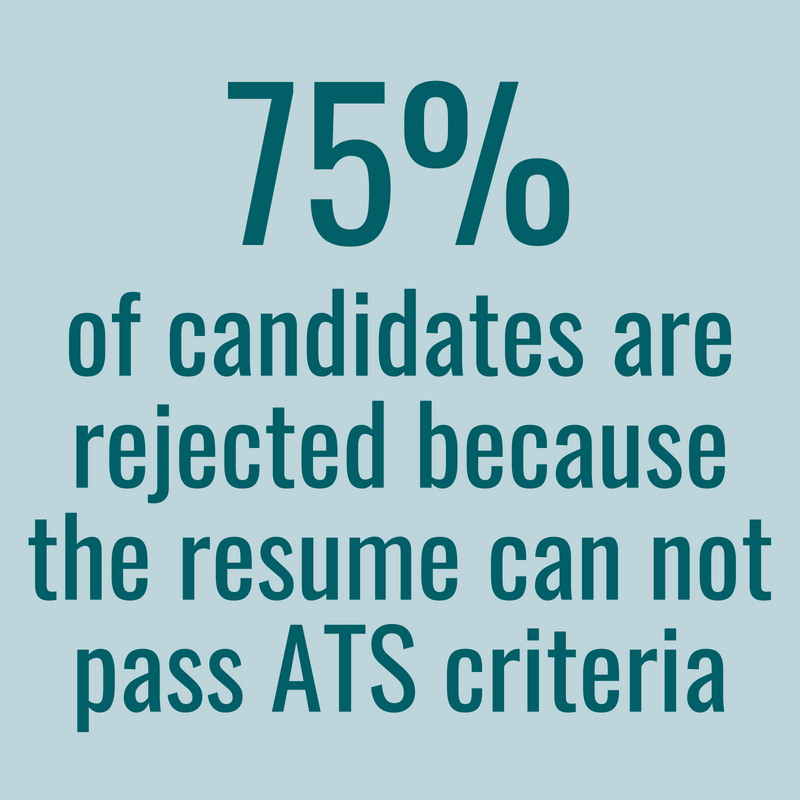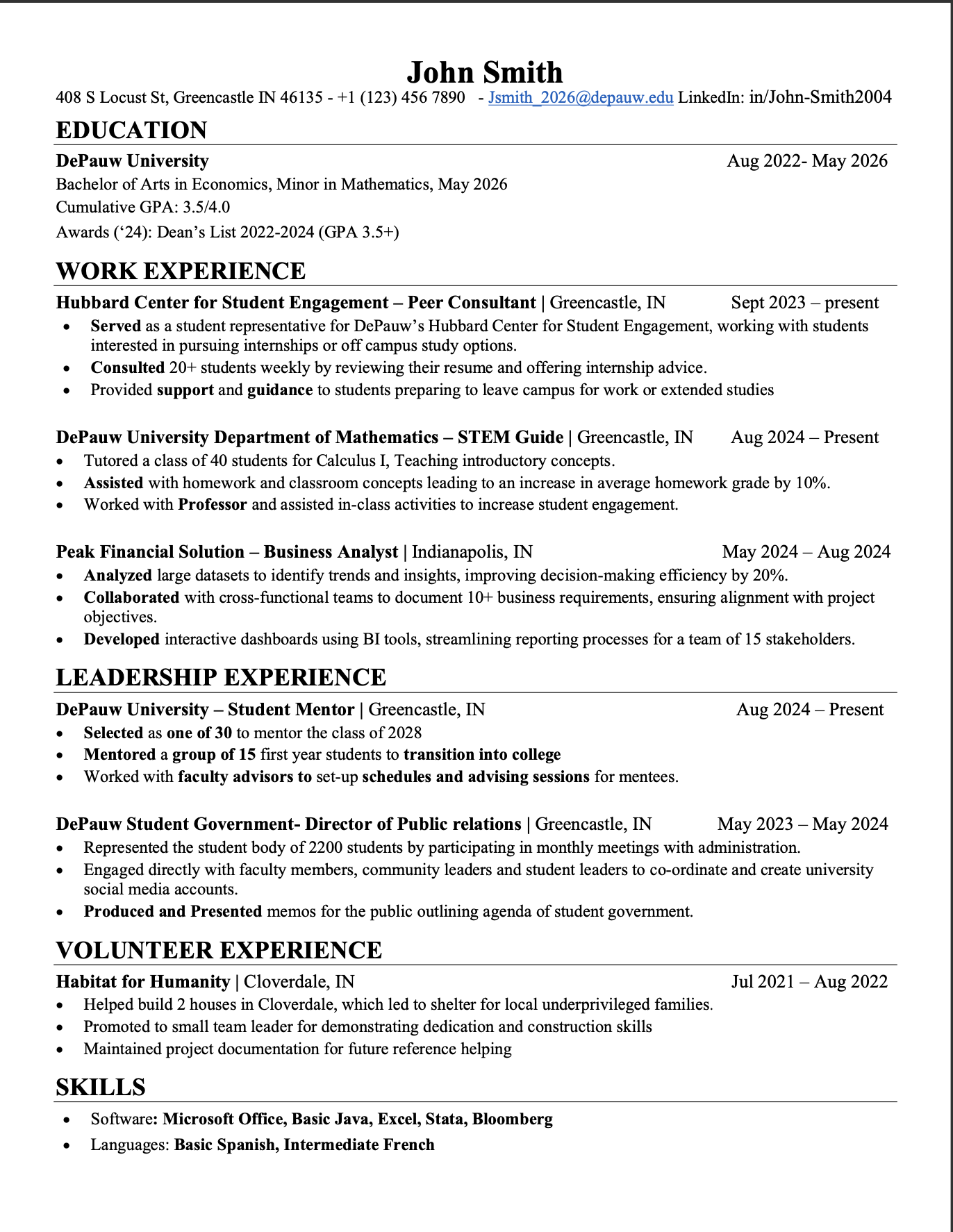6–10 Seconds to Make an Impression
A brief review of personal, educational, and professional qualifications used to apply for job positions.
 What is an applicant tracking system (ATS)? ATS is a software program companies can use to quickly sift through and eliminate resumes, by looking for keywords and phrases.
What is an applicant tracking system (ATS)? ATS is a software program companies can use to quickly sift through and eliminate resumes, by looking for keywords and phrases.
How do you know if a company uses ATS? There is no sure way to know. Industries such as healthcare, technology, and government organizations, or companies that employ more than 100 people, are more likely to use ATS for review.
Creating your content
- Headline & Contact Info:
- Begin with your full name [biggest font on your page], but do not use a header/footer. ATS can not read text in these areas.
- Include email address [must be professional] and telephone number. Physical address and LinkedIn are optional.
- Education:
- Start with most recent degree [only include high school if you are a first year]
- Include degree & major [Bachelor of Arts in Sociology], institution name and location, date degree is expected or was granted, GPA if 3.0 or above, academic honors or awards. Relative course work is optional and should have minimal details.
- Experiences:
- List relevant experiences in reverse-chronological order. May include undergraduate research, internships, part-time jobs, off-campus study, community service, volunteering, or leadership positions.
- Be consistent is listing of position, organization, locations and time frame [month/year].
- 2-5 bullet points, sometimes called accomplishment statements, per experience. Use action verbs and keywords found in the position description. Helpful formula: Strong skill verb + qualifier [how, what, why] + quantifier [results or purpose]
- Skills:
- Relevant hard skills [specific, taught abilities that can be defined and measured], avoid soft skills which are less tangible like good-listener, dedicated, hard-worker.
- May include skills like languages with qualifiers, computer skills, lab skills, software programs.
- It is more effective to describe how you can use your skill in your accomplishment statements than to list them separately.
- Tailored Section Headings:
- Use tailored section headings to quickly demonstrate relevant experiences, like "Media Experiences," "Research Experiences," "Leadership Experiences," etc.
- An experience does not always have to be paid. Any relevant experiences you have completed should be included.
Finishing Touches
- Margins & Formatting:
- Should not exceed 1 page in length
- Margins can be set as low as 0.75 inch. Keep margins constant on all four sides.
- Use formatting tools like spacing and white space to make your resume scannable and easy to read.
- Be wary of using a template or text boxes because many ATS are not compatible or able to read the information.
- Choosing Font Style & Size:
- Serif typeface, like Times New Roman, Georgia or Baskerville.
- Sans-serif fonts, like Arial, Helvatica or Verdana [considered the safer choice for ATS readability]
- Keep font size 10-12, with larger font size for your name. Tools like italics and bolding can be used to create variety.
- Additional Tips:
- Proofread, proofread, proofread!
- DO NOT include ethnicity, photos, questionable language, interests, or religious affiliations.
- Work with a Hubbard Center adviser, faculty member, or alumni to create the most competitive resume you can.
Sample Resume

